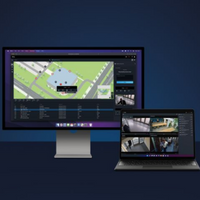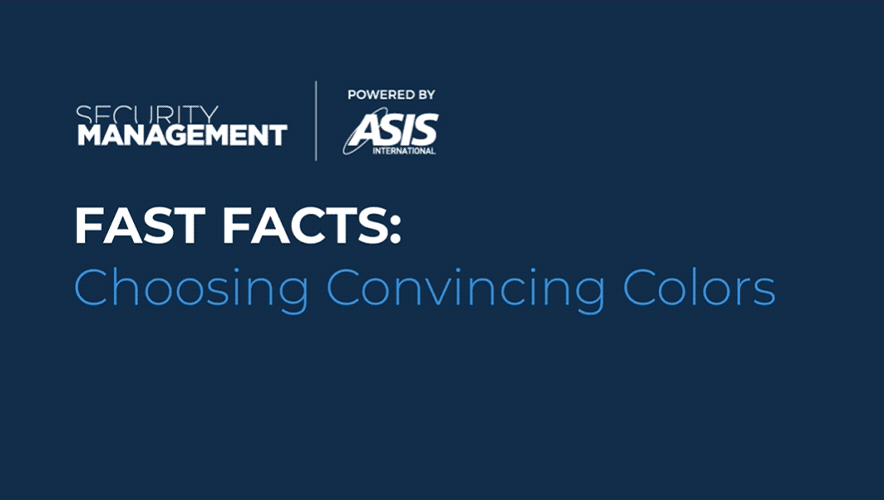3 Questions to Ask Your Peers to Derive Additional Business Value from AI Analytics
For years, video analytics have empowered security teams with capabilities that go beyond what is humanly possible to deliver better security outcomes. What began as simple motion detection has now evolved into a new wave of video analytics, capable of producing higher levels of analysis and understanding of event detection, classification, tracking, and forensics. This evolution spells good news for security teams and—with the right positioning—even better news for their colleagues.
But how?
Armed with existing video surveillance and next-generation analytics, security teams now oversee an increasingly valuable and granular organizational asset: data about what is going on in a physical space. In traditional security applications, this data translates to added contextual awareness and faster, more appropriate event responses.
However, this same data can be fed to other stakeholders across an enterprise to deliver even greater value. It is this additional value that can make all the difference in organizations where security spend is limited.
To better communicate the value of intelligent video analytics, here are three questions security teams can ask their colleagues in order to blur the lines between security and other departments.
Is All Available Real Estate Being Used in the Most Efficient and Effective Way Possible?
This is a great question to pose to facilities and operations managers because these individuals have a voracious appetite to understand when, where, and how their physical environments are being used. Space utilization, traffic flow, and density are all key inputs to this effort, and this data can be quickly extracted using video analytics. The data can now be fed into other business systems, such as Tableau or Microsoft Power BI, to determine positive and negative space utilization.
Imagine if data pulled and analyzed from security camera footage indicates that half of the desks in an office are only being used a small percentage of the time. The organization could reasonably suggest that downsizing the office or subleasing their space may be in the best financial interest of the company. In this way, security teams and their data become integral when designing and executing the next normal for how enterprises get work done.
SponsoredWhat is the power of unification?Unifying video management and access control, along with other functions, reduces costs and improves efficiency. If your organization is thinking of moving towards unified security, you’re not alone. With Genetec Security Center 5.11, we make unification even easier. |
What is Currently Being Done to Proactively Prevent Injury or Liability Within the Organization?
In the field of environmental health, safety, and compliance, each undetected incident can quickly turn into an expensive liability if a workplace injury or compliance infraction occurs. With analytics, safety and management teams can quickly identify and remediate when an employee is engaging in prohibited behavior (for example, when an employee has entered a restricted area or is operating machinery without proper protective gear).
The ability to detect such behaviors faster and drive policy changes produces cost savings in real dollars. To illustrate, OSHA's Office of Regulatory Analysis reports that companies that implement effective safety and health programs can expect reductions of 20 percent or more in their injury and illness rates with a return of $4 to $6 for every $1 invested.
Can We Positively Verify That Our Vendors Have Fulfilled Their Contractual Obligations During the Last Six Months?
Operations and facilities management often rely on outside vendors to complete specialized tasks to save on labor and associated costs. However, experts estimate that poorly managed vendors can impact the bottom line by as much as 9 percent of annual revenue, with research group Aberdeen estimating collective losses at approximately $153 billion annually.
Manually reviewing the contractors’ work is both laborious and time-consuming. AI-powered video analytics can review hundreds of hours of footage in just minutes, confirming without a doubt that the cleaning crew completed their rounds while the parking lot snow removal company, for example, did not.
In the past, one of the only ways to demonstrate ROI for a security solution was to quantify losses that did not occur. With the ability to collect and analyze huge volumes of data using existing video systems, next-generation video analytics can deliver tangible and documented cost-savings for myriad applications.
So, while the initial financial investment in new advanced video analytics may be security-driven, the benefits transcend traditional security operations and can extend to every business operations unit across the enterprise.
Brent Boekestein is the co-founder and CEO of Vintra, Inc., a Silicon Valley company that delivers AI-powered video analytics solutions that transform any real-world video into actionable, tailored, and trusted intelligence. Prior to Vintra, Boekestein was the vice president of sales for Redwood Systems, an analytics firm that provided key insights for major corporations to make better real estate and security decisions. He led the company’s expansion into more than 20 markets globally.

















